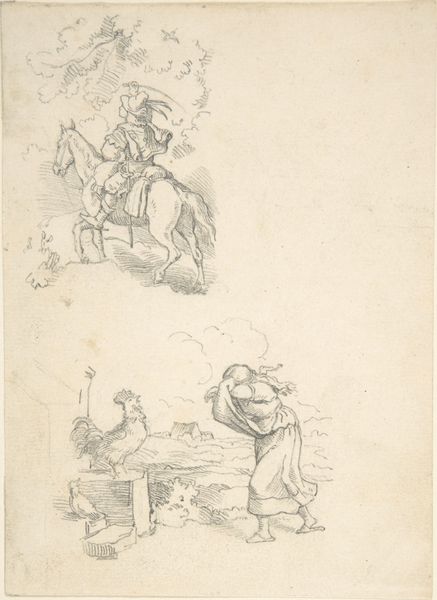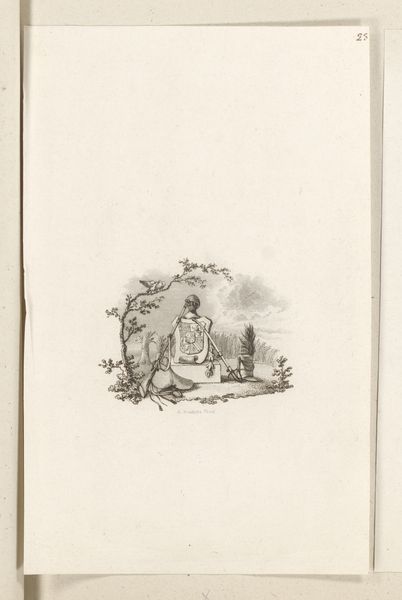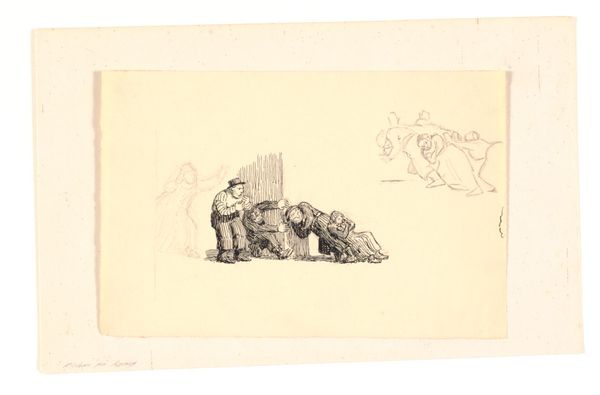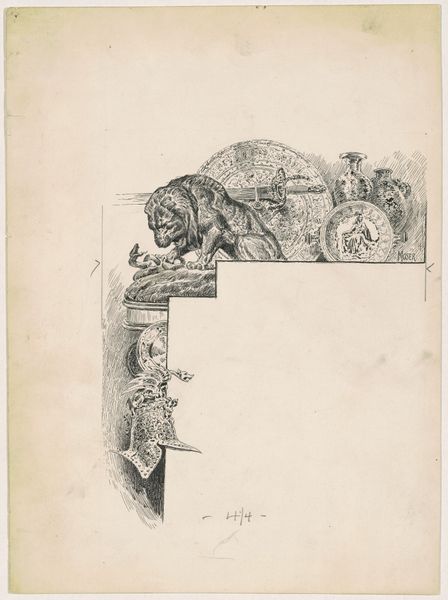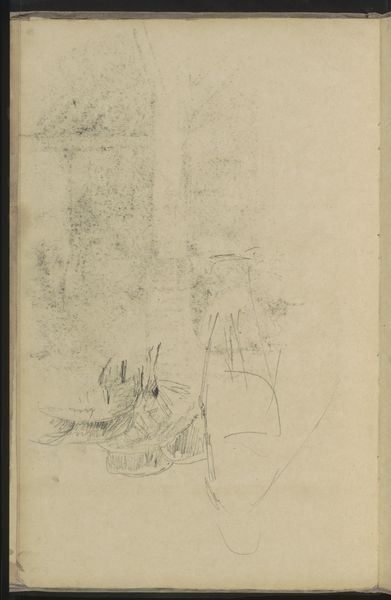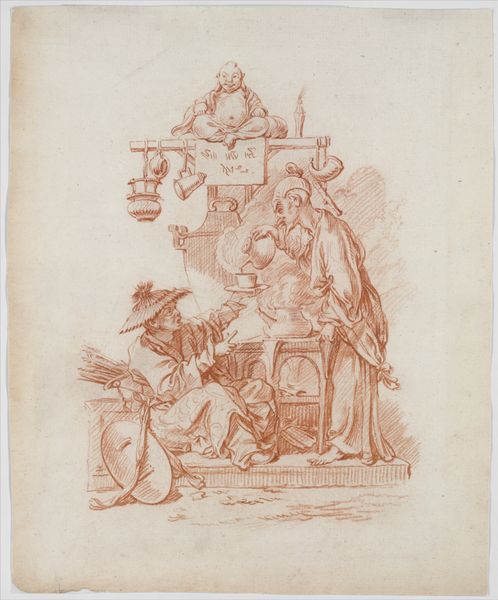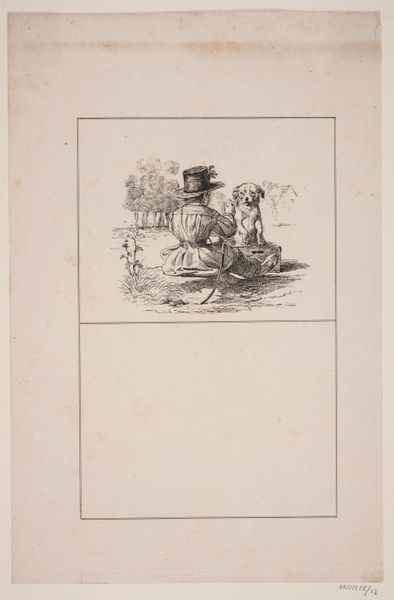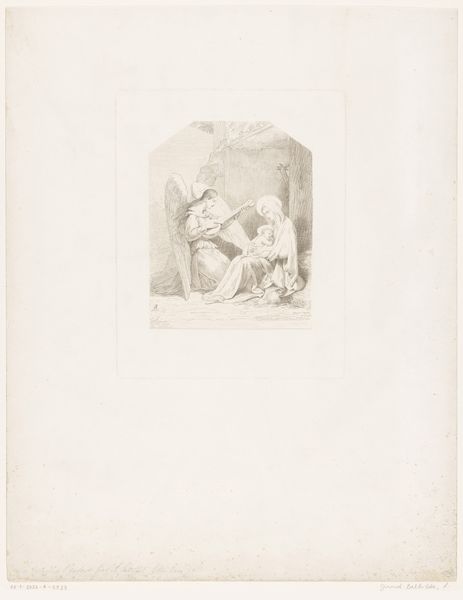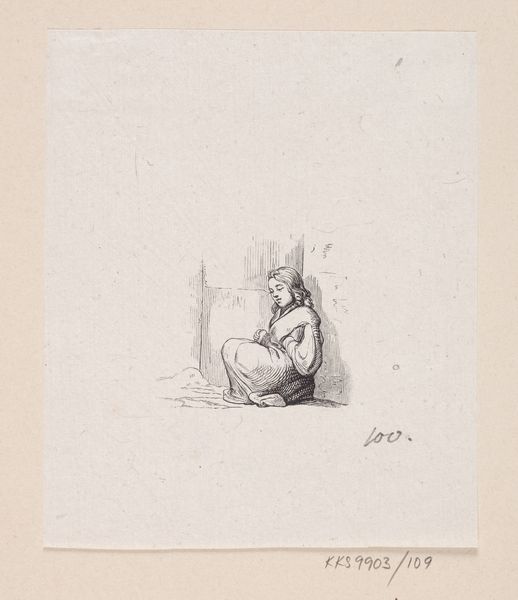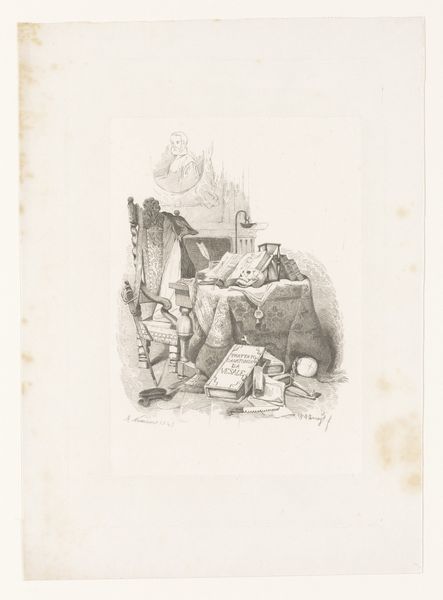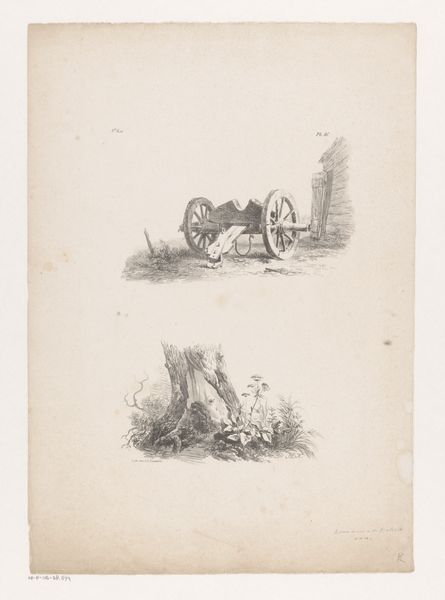
Kattene. Foroven blyantsstudie af et kattehoved og to skader 1843
0:00
0:00
drawing, print, paper, pencil
#
drawing
# print
#
pencil sketch
#
landscape
#
figuration
#
paper
#
romanticism
#
pencil
Dimensions: 182 mm (height) x 138 mm (width) (bladmaal)
Curator: This is "Cats. Above Pencil Study of a Cat's Head and Two Magpies," a pencil drawing on paper crafted in 1843 by Johan Thomas Lundbye. Editor: Immediately, I'm struck by the contrast between the more detailed group of cats at the bottom, playfully interacting with what seems to be a barrel, and the much fainter bird sketches hovering above. It creates a kind of dreamlike duality. Curator: Indeed. The cats, with their expressive poses and implied motion, occupy a tangible, almost humorous space, a very familiar tableau of animal interaction. They represent domestication, everyday life. Editor: I think it might say more about the artist’s relation to animals and nature. It is fascinating how even a quick sketch can embody societal views of nature. I wonder, for example, why are the magpies given so much less attention? The hierarchy seems clear. Curator: You touch upon a deeper issue. The magpies, being wilder creatures, are ephemeral, barely captured. The cat's fixed form mirrors a control we exerted over some animals and not others. The barrel too is a marker of civilisation intruding on the natural world, domesticating animals and landscape alike. Editor: Lundbye's use of pencil seems quite deliberate in this sense. The softness softens the hierarchy and suggests it is a naturalised, normalised image. It perhaps gently naturalises this imbalance of power. What do you make of the slightly threatening demeanor of one of the cats? It feels disruptive and perhaps revealing in the context we have just established. Curator: An important observation! Yes, that cat at the lower left, mouth open, introduces a hint of unease, a wildness that challenges this easy domestication. Maybe, at a deeper level, it is more aligned with the almost forgotten magpies above. Editor: It almost reminds us of the constant tension between control and freedom, the precarious balance of human intervention in nature that even a simple drawing like this reveals. It seems to highlight that these boundaries we establish may be less stable than we hope or even assume. Curator: An arresting conclusion. It underscores the power of a quick sketch to unveil lasting emotional, historical, and cultural reverberations within familiar iconography.
Comments
No comments
Be the first to comment and join the conversation on the ultimate creative platform.
